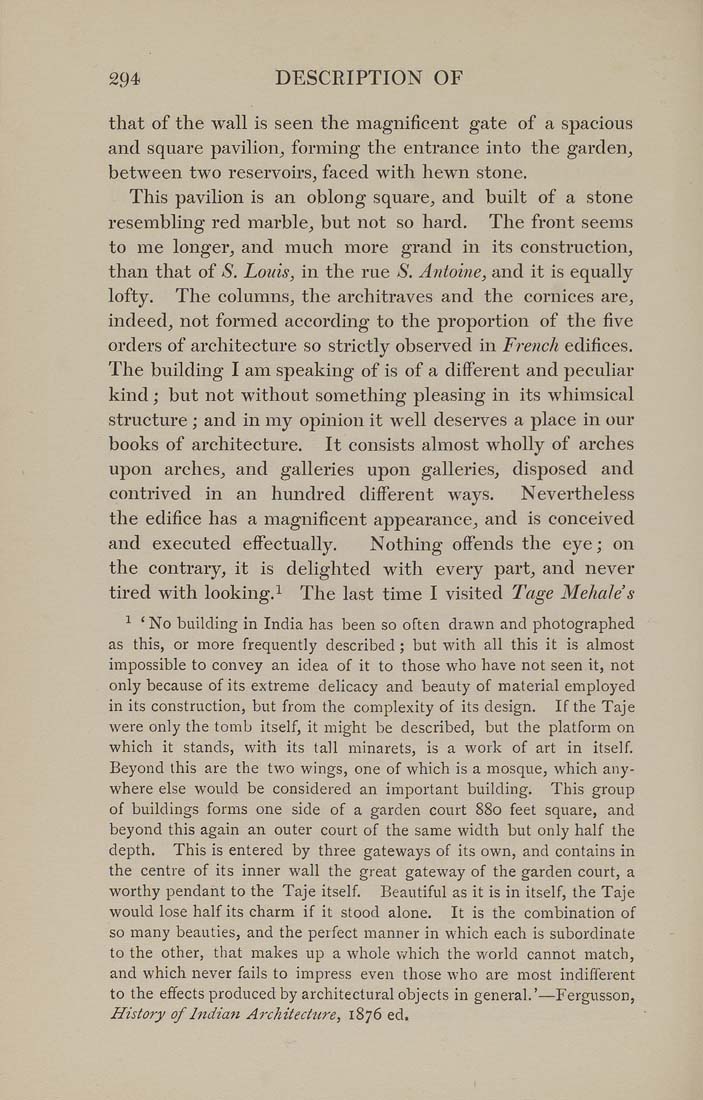294 DESCRIPTION OF
that of the wall is seen the magnificent gate of a spacious
and square pavilion, forming the entrance into the garden,
between two reservoirs, faced with hewn stone.
This pavilion is an oblong square, and built of a stone
resembling red marble, but not so hard. The front seems
to me longer, and much more grand in its construction,
than that of S. Louis, in the rue S. Antoine, and it is equally
lofty. The columns, the architraves and the cornices are,
indeed, not formed according to the proportion of the five
orders of architecture so strictly observed in French edifices.
The building I am speaking of is of a different and peculiar
kind; but not without something pleasing in its whimsical
structure; and in my opinion it well deserves a place in our
books of architecture. It consists almost wholly of arches
upon arches, and galleries upon galleries, disposed and
contrived in an hundred diflferent ways. Nevertheless
the edifice has a magnificent appearance, and is conceived
and executed effectually. Nothing offends the eye; on
the contrary, it is delighted with every part, and never
tired with looking.! 'Yhe last time I visited Tage Mehale's
^ ' No building in India has been so often drawn and photographed
as this, or more frequently described; but with all this it is almost
impossible to convey an idea of it to those who have not seen it, not
only because of its extreme delicacy and beauty of material employed
in its construction, but from the complexity of its design. If the Taje
were only the tomb itself, it might l:>e described, but the platform on
which it stands, with its tall minarets, is a work of art in itself
Beyond this are the two wings, one of which is a mosque, which any¬
where else would be considered an important building. This group
of buildings forms one side of a garden court 880 feet square, and
beyond this again an outer court of the same width but only half the
depth. This is entered by three gateways of its own, and contains in
the centre of its inner wall the great gateway of the garden court, a
worthy pendant to the Taje itself Beautiful as it is in itself, the Taje
would lose half its charm if it stood alone. It is the combination of
so many beauties, and the perfect manner in which each is subordinate
to the other, that makes up a whole v/hich the world cannot match,
and which never fails to impress even those who are most indifferent
to the effects produced by architectural objects in general.'—Fergusson,
History of Indian Architecture, 1876 ed.
|








